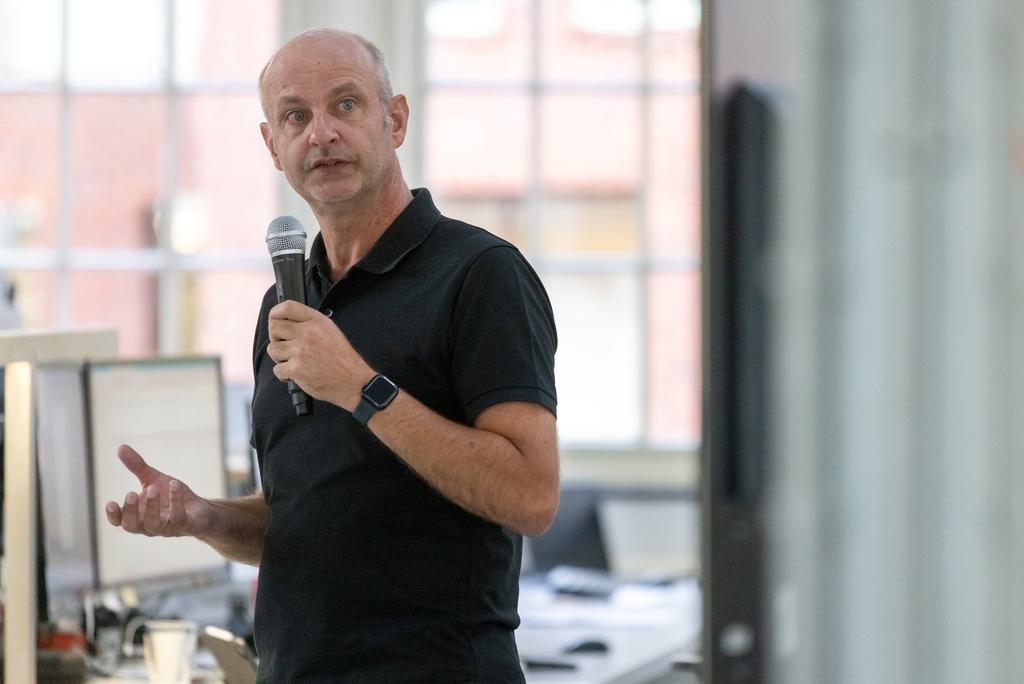In the second morning lecture of cepezed's Green Week, Menno Rubbens, director of cepezedprojects, revealed his vision of a sustainable construction sector. Among other things, he brings this vision into practice with Transition Team Circular Construction Economy And encourages architects to design for uncertainty.
transition team
Menno is one of about twenty members of the Transition Team Circular Construction Economy. This team is an initiative of several Dutch ministries that needed more insight and good advice from individuals in the field. All team members have a link to the building sector, but different backgrounds. Within the team, Menno focuses on what and how architects design, and how this contributes to sustainability. Due to the short lines between cepezed, cepezedbouwteam and cepezedprojects, he has a good view on this.
to measure is to know
Just like Andy van den Dobbelsteen, Menno clarifies what he understands by sustainability. Sustainable architecture meets the needs of the present without compromising future generations. “Seems totally obvious, but keep this in mind when designing!” Unambiguous definitions are also important for the Transition Team. Only when you have a definition you can measure sustainability. And only when you can measure it can you draw up rules for it. Rules that you then need to monitor, of course. The team is already thinking about this too.
one hundred percent circular
The Transition Team is striving to indeed achieve, as internationally agreed, 100% circular construction by 2050. The graph Menno shows makes it clear that we are far from there. The transition requires, among other things, that we start thinking differently about quality. That responsibility for a product extends beyond the sale. That the tax system is addressed - currently, for example, a new door is cheaper than a 'harvested' door. And that something like a 'harvest passport' becomes self-evident and unambiguous. In general, knowledge, as well as awareness about circular building, will have to increase. So that the above choices will meet with approval and there will be more professionals in this field.
text continues below the photos
Menno Rubbens: Towards an intrinsically circular building sector



all predictions are wrong
When Menno quotes Stewart Brand's book 'How Buildings Learn', he not only mentions the well-known principle of 'shearing layers'. Perhaps more importantly, he finds Brand's remark 'All buildings are predictions, and all predictions are wrong'. That makes it clear that we need to design for uncertainty. Another of Brand's important insights concerns complexity. Although the life of a building only starts after completion, Brand argues, buildings are often already terribly complex when delivered. Whereas complexity should be allowed to grow over time. Menno adds that this calls for architecture with a simple structure, like that of cepezed.
more bio-based material
Circular construction is often mostly associated with recycling, Menno notes. 'If you use the R-ladder and pay attention to CO2 emissions, then 're-fuse', 're-duce' and 're-use' are more important. So making something new, which in principle will last for hundreds of years.' To achieve zero CO2 emissions in 2050, Menno says we will have to work more with bio-based materials. ‘Conventional building materials last a long time, but production is too polluting. So, choose other materials or companies that use clean energy in production.'
time travel
Another book that inspires Menno is 'Products That Last' by TU Delft professor Conny Bakker. She states that different business models can lead to a circular economy. 'It doesn't necessarily have to be one way, as long as you keep the future in mind, by focusing on when a building is taken apart again to be reused.' In this respect, Menno experienced the design, construction and dismantling of the Temporary Court Amsterdam as 'a kind of time travel', because this did not extend over 30 years or more but was compressed into five years.
to the next level
Menno envisions an intrinsically circular building sector. Change is already happening, he points out, but too little is known about moveable and demountable buildings. In this respect too, cepezed acts as an example and test station. Menno: 'We focus on high-quality materials that last a long time and on constructions that are adaptable, demountable and relocatable. This way of building has potential and can lift the building sector to a higher level. I am ready to get architects as well as structural and MEP-engineers on board!'
paradigm shift
Menno thinks that everyone will pick up and elaborate the knowledge cepezed has developed in a slightly different way. This knowledge must be shared. The fact that he regularly sees details that have been designed by cepezed appear in presentations by others is unavoidable, in his opinion - 'sometimes it is mentioned that it originates from cepezed, sometimes not'. Patenting is difficult with technical details like these, but anyway not the direction cepezed wants to go. 'And those technical details are the least of the problems,' says Menno. 'The most difficult thing is the transition of the building process, which is a paradigm shift.'
Menno Rubbens is director of cepezedprojects. He is a member of the Transition Team Circular Construction Economy and was named Circular Hero 2022.

more about the cepezed Green Week:
• Green Week at cepezed
• Andy van den Dobbelsteen: think ‘beyond the building’
• Joost Jacobi: the ins and outs of ‘water circular design’
• Chantal van Schaik: the carbon budget is not taken seriously
• MOR studio: architecture should leave something positive rather than use something up
→ Mail bd@cepezed.nl or call our business development team on +31 (0)15 2150000